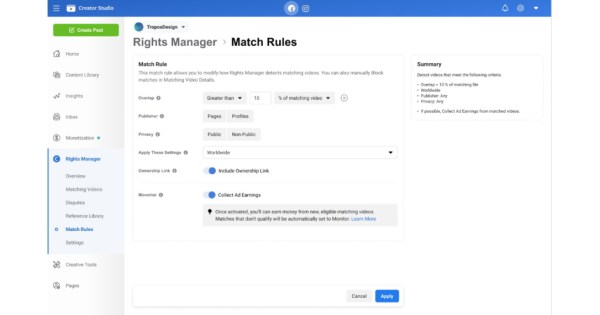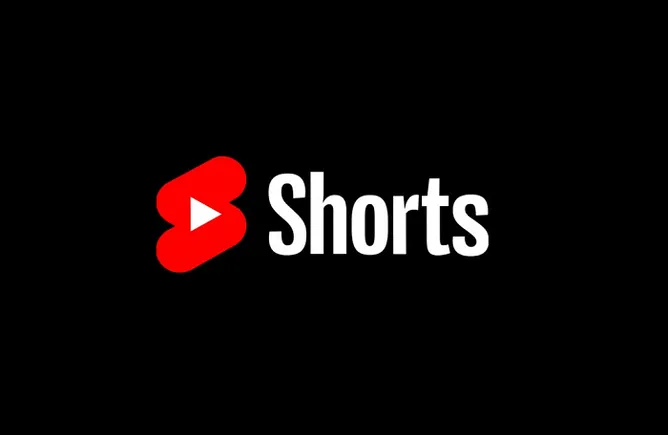Mining is one of the most popular ways to make money with crypto. However, it has been steadily becoming less and less profitable as time goes on. Despite this, mining is one of the most essential components of the crypto world, both because of its necessity for the normal functioning of the blockchain and because of its near-cult status. Mining is something many crypto enthusiasts want to try even if it won’t bring them any profit. However, that doesn’t mean that cryptocurrency mining can’t be profitable — or easy.
In this article, we will explain everything you need to know about cryptocurrency mining and then take a look at the most profitable crypto to mine.
What Is Cryptocurrency Mining?
As we have said in some of our previous guides on crypto mining, it, unfortunately, does not include such exciting objects as pickaxes or diamonds. Fortunately, however, it also doesn’t require you to do any manual labor to get to a treasure arguably more valuable than the shiniest of gems — cryptocurrency.
To put it simply, cryptocurrency mining is the process of solving complex mathematical equations in order to validate crypto transactions. Mining can differ based on the cryptocurrency being mined: if it has a proof-of-work (PoW) hashing algorithm, it will require spending a lot on electricity and having top-notch mining equipment. Proof-of-stake (PoS) based cryptocurrencies require you to own a large amount of said crypto: the more you have, the more profit you can get. That’s why it’s called proof of “stake.”
How Can You Mine Crypto?
What Is the Best Coin to Mine? Most profitable cryptocurrencies to mine
Crypto mining can be divided into 3 categories depending on what hardware (or mining machine) is used. Here they are.
ASIC Mining
An ASIC miner, or an Application-Specific Integrated Circuit Miner, is probably the least well-known yet the most efficient form of crypto mining hardware there is. Unlike CPUs or GPUs, ASICs are designed for a single purpose — mining, or solving complex math problems that validate and secure the blockchain.
Generally, most ASIC mining machines are designed and created to mine specific cryptocurrencies. ASICs are generally not that expensive, on average costing around $300–$500. ASIC miners are around 100,000 times more efficient and have a higher hash rate than the best CPU and GPU miners — they have a lot of mining power. However, one downside of ASIC mining is that it is not available for all cryptocurrencies — for example, mining Monero is not possible with ASIC rigs. Additionally, unlike the other two mining equipment types, ASICs are not upgradeable and aren’t as durable. You might like to read this article to learn more about ASIC miners.
GPU Mining
A GPU, or a Graphics Processing Unit, is basically a graphics video card we use for things like watching movies or playing games on our computers. It can also be used to mine cryptocurrency.
GPU mining isn’t as efficient as ASIC mining (although the hash rate can still be high) and is, on average, more expensive. However, it gives miners flexibility, allowing them to mine different coins using the same hardware device. Additionally, GPU miners can be used for non-mining activities. Besides, many people already own them. We have prepared a list of the best GPUs for mining.
On the other hand, although most people already own a GPU, the computer it is used by is likely not strong enough to make GPU mining profitable. So not only will you have to buy an expensive GPU, but you will also have to pay for a computer that can actually support it. Moreover, due to GPUs’ high power consumption, maintenance fees for GPU miners are high, too.
In order to mine with a GPU (or a CPU), you need not only the usual wallet-hardware combo but also mining software. Learn more about the software you can use for GPU mining and CPU mining here.
What should I mine with my GPU?
GPUs are most often used in the process of cryptocurrency mining, as they provide a much faster, more powerful alternative to conventional CPU (Central Processing Unit) mining. The type of GPU you’ll need to mine a specific coin depends on several factors, such as the coin’s algorithm and popularity. However, some of the most widely mined coins today include Ethereum Classic (ETC), ZCash (ZEC), Vertcoin (VTC), Monero (XMR), Ravencoin RVN), Haven Protocol (XHV), Bitcoin Gold (BTG), and Dogecoin (DOGE). Depending on your budget constraints and personal preferences, you can choose from one or many different GPUs for these particular coin mining operations.
Wanna see more content like this? Subscribe to Changelly’s newsletter to get weekly crypto news round-ups, price predictions, and information on the latest trends directly in your inbox!
Become the smartest crypto enthusiast in the room
Get the top 50 crypto definitions you need to know in the industry for free
CPU Mining
A CPU, or a Central Processing Unit, is the oldest and, well, the most outdated type of mining hardware. CPU miners allow you to mine crypto using your computer’s processing power.
Not only is it extremely slow and inefficient, but CPU mining is also harmful to your computer. Additionally, CPU mining profit will, in most cases, be incredibly meager and won’t be worth it.
CPU mining also includes mobile mining… which is definitely not worth it. It’s easily overloaded, consumes too much power, and overheating will damage your device — all for little to no return in terms of profit.
However, CPU and mobile mining are good choices for people who are after the experience and not the profit since you don’t really need to make the initial investment. If that’s the case for you, make sure you choose a cryptocurrency that isn’t too hard to mine and doesn’t require a lot of computational power. We discuss the best CPU miners in this article.
What are the Best Cryptocurrencies to Mine?
Now that we’ve looked at what crypto mining is and how it works, let’s discuss what cryptocurrencies are the best to mine.
Most Profitable Coins to Mine
The main thing people are looking for when choosing to mine is profitability. Nevertheless, some beginner miners may misinterpret this metric: it doesn’t just depend on the cryptocurrency price. You also have to consider the costs associated with running a mining rig for said cryptocurrency, how much of it you will be able to get per day, the number of blocks you need to mine to make a profit, and so on.
A good way to calculate the profitability of your future mining operation is to use a mining calculator. Input the crypto you want to mine, your hardware, hashing power, and so on to see how much profit you can potentially make per day based on the current mining reward.
Alternatively, you can also use a website like whattomine.com to see which coin currently has the highest rewards per block and is the most worthwhile, but don’t chase after immediate profits as mining is a rather long-term investment. Due to the high volatility of the crypto market, what may be profitable today can cause you to incur losses tomorrow.
Ethereum (ETH)
As its blockchain has switched to the proof-of-stake consensus mechanism, Ethereum can no longer be mined. Instead, you can opt to stake it.
Can’t load widget
Ethereum Classic (ETC)
Block time: 13 seconds
Best hardware to use: GPU, CPU
Ethereum had to carry out a hard fork back in 2016 in order to recover from the DAO attack. Ethereum Classic is, just as the name suggests, a slightly modified and upgraded version of that original, pre-2016 Ether. It can be mined using CPUs and graphics cards, making it a viable option for those looking to diversify their portfolio.
With a market cap of around 6 billion USD, Ethereum Classic undoubtedly has a lot of fans, albeit fewer than its younger cousin. As a result, it also requires a considerable amount of hardware capabilities to get the block mining reward but is likely to give miners stable profit in the long run, considering it’s an established cryptocurrency. Overall, it can be thought of as a nice alternative to Ethereum: the reduced complexity of mining Ethereum Classic is balanced out by its less stable and lower price.
Monacoin (MONA)
Block time: 15 minutes
Best hardware to use: GPU
Monacoin is a fork of Litecoin. Its Lyra2RE(v2) proof-of-work hashing algorithm makes it one of the best cryptos to mine with GPUs. All one needs is a secure hardware wallet and a hardware device that can handle the coin’s mining process, keeping energy consumption relatively low.
As this is a lesser-known cryptocurrency, it is a lot easier to mine than ETC or ETH, making it a little more profitable. However, its low price and dim growth prospects aren’t very promising if you’re looking to make millions from mining.
Vertcoin (VTC)
Block time: 2.5 minutes
Best hardware to use: GPU
Vertcoin is a cryptocurrency that uses the Lyra2REv3 proof-of-work hashing algorithm. This cryptocurrency is ASIC-resistant, meaning it can only be mined with GPUs or CPUs. It ensures a more equal distribution of the coin because ASIC-compatible cryptocurrencies are often mined by centralized ASIC mining firms and pools, making the whole process much less democratic. For miners who prioritize decentralization, Vertcoin has become a popular choice.
ZCash (ZEC)
Block time: 1.15 minutes
Best hardware to use: GPU, CPU
ZCash is another ASIC-resistant cryptocurrency. The company that created it also focuses quite heavily on privacy, which made this coin popular in the crypto world. Although this coin is harder to mine due to being ASIC-resistant, it is worth it: the aforementioned impossibility of mining it with ASICs makes the coin’s (rather high) price much more stable and reliable, meaning it can be a good long-term investment.
Firo (FIRO)
Block time: 5 minutes
Best hardware to use: GPU
Firo, formerly Zcoin, focuses on anonymous transactions, appealing to a dedicated community that values privacy. Its ASIC-resistant FiroPoW algorithm keeps mining accessible, making it a good choice for GPU miners. However, memory requirements for mining can be demanding, and its mining profitability is more sensitive to electricity costs compared to other coins, so it’s best suited for miners with efficient setups and lower power costs.
Grin (GRIN)
Block time: 1 minute
Best hardware to use: GPU
Grin is a fully open-source and community-driven cryptocurrency. A block of 60 grins is mined every minute, creating one coin every second, forever. Such linear emission with a fixed block mining reward creates a constant increase in supply but decreases the inflation rate. This design not only ensures the long-term security of the blockchain but also makes the mining process significantly fairer and more democratic.
Grin is by no means a popular cryptocurrency, but it has a dedicated community of users who believe in it. Since this crypto is less prominent, it is easier to mine and can bring in steady profits despite its low price. 60 grins per block may not seem like a lot, but with the coin’s price being $0.40, that’s $24 per hour. Not an astronomical amount, obviously, but not bad at all.
Primecoin (XPM)
Block time: 1 minute
Best hardware to use: CPU
Primecoin is unique in that its mining process contributes to science by searching for prime number chains. It’s accessible to CPU miners, which opens doors for miners without specialized hardware. While Primecoin is an interesting and community-driven project, its profitability tends to be lower than other mineable coins, and the ecosystem is smaller, which may limit long-term growth potential.
Monero (XMR)
Block time: 2 minutes
Best hardware to use: GPU
Monero is a privacy coin that was created in 2014. It is based on the CryptoNote protocol and uses the RandomX hash function. This is yet another ASIC-resistant cryptocurrency.
Monero is one of the most popular coins to mine, and for a good reason: it has an unlimited supply, meaning its mining complexity doesn’t increase as much as that of Bitcoin. Also, it has a high price and is ranked in the top 30 by market capitalization. It has promising long-term prospects. Overall, Monero definitely is one of the most profitable cryptocurrencies to mine.
Visit this page to see our guide to Monero mining.
RavenCoin (RVN)
Block time: 1 minute
Best hardware to use: GPU
RavenCoin uses an algorithm called KAWPOW. It is one of the best cryptocurrencies to mine using GPUs, which may come in handy for beginners. This coin is ranked within the top 100 by market cap, making it a worthwhile GPU mining venture.
Namecoin (NMC)
Block time: 10 minutes (merge-mined with Bitcoin)
Best hardware to use: ASIC
Namecoin builds on Bitcoin’s codebase to create a decentralized domain name system, allowing for greater freedom from centralized DNS systems. It can be merge-mined with Bitcoin, so miners can earn Namecoin without dedicating additional resources. Nonetheless, its applications are fairly niche, primarily supporting decentralized DNS, and it’s highly reliant on Bitcoin’s ecosystem, so the future of Namecoin largely hinges on Bitcoin’s stability.
DigiByte (DGB)
Block time: 1.25 min
Best hardware to use: ASIC, GPU, CPU
DGB is a fast-growing blockchain focused on the security of digital payments and decentralized applications (dApps).
DigiByte, based on the UTXO technology, uses five different independent algorithms to process transactions on the network. This technology supports various mining options, such as ASICs, GPUs or CPUs, making DGB mining as profitable as possible.
Aeternity (AE)
Block time: 3 min
Best hardware to use: GPU
Aeternity is an open-source intelligent platform launched in January 2017. It aims to solve the scalability and security problems that many cryptocurrencies face.
AE combines proof-of-work (PoW) and proof-of-stake (PoS) algorithms with CuccooCycle hashing, in which miners create blocks and simultaneously verify transactions.
Aeternity is currently one of the most profitable coins for mining due to the unusual approach to the network and the speed of operation.
Metaverse (ETP)
Block time: ~21 sec
Best hardware to use: ASIC, GPU
Metaverse is a cryptocurrency launched in June 2017. Metaverse is China’s first public blockchain, which should highlight all the successful ideas of Bitcoin, NEO, and Ethereum, improve them, and combine them into one platform.
The main goal of the project is “to construct a universe where digital assets (Metaverse Smart Token, or MST) and digital identities (Avatar) build the basis for asset transactions with the help of a value intermediary (Oracle), thus establishing a new blockchain ecosystem that will transform human society and allow us to enter the New Reality.”
The coin runs on the Ethash Proof-of-Work algorithm.
The most profitable way of mining ETP at the moment is to participate in a large and reliable mining pool: it will help combine the hashing power of all participants.
Helium (HNT)
Block time: Variable (based on data transfer needs)
Best hardware to use: Hotspot device
Helium enables IoT devices to connect through a decentralized network, allowing Hotspot owners to earn HNT by providing wireless coverage. It’s a practical option for those looking for passive income in areas with strong IoT demand. That said, the initial cost of purchasing a Hotspot device can be high, and the earning potential can vary significantly based on the location and demand for IoT coverage.
Haven Protocol (XHV)
Block time: ~2 minutes
Best hardware to use: GPU
Haven Protocol was launched in April 2018. Haven Protocol is designed as a decentralized, private, and untraceable cryptocurrency. It builds upon Monero’s strong privacy features but introduces a unique system that allows for a mix of stable and volatile assets within the same blockchain. This feature enables users to mint and burn the stablecoin version of the asset, known as xAssets, which is always backed by the base currency in a 1:1 ratio.
Haven Protocol employs the CryptoNight Haven Proof-of-Work algorithm, which is tailored for GPU mining. As with many cryptocurrencies, joining a mining pool can prove beneficial for Haven Protocol miners. In the mining pool, participants can merge their GPU mining resources, ensuring more consistent rewards compared to solo mining.
Litecoin (LTC)
Block time: ~2.5 min
Best hardware to use: ASIC, GPU
Having originated as a “lighter” version of Bitcoin, Litecoin has some common features with BTC. However, LTC transactions are cheaper and four times faster.
Unlike Bitcoin, LTC uses a proof-of-work hashing function called Scrypt, which allows you to mine this digital currency using a GPU without buying expensive ASIC chips. The mining reward of LTC can be very high. Yet, please note that LTC mining requires a powerful hardware set-up that consumes a lot of energy.
Easiest Cryptocurrencies to Mine
Profitability, however, isn’t the only metric prospective crypto miners pay attention to. When you’re just about to start mining, it can be a good idea to mine cryptocurrency that won’t require you to set up a complex mining operation or an over-the-top mining rig. Let’s take a look at the top cryptocurrencies that are known for being easy to mine.
Dogecoin (DOGE)
Block time: 1 minute
Best hardware to use: ASIC mining machine
Dogecoin is not only very easy to mine, but it also can be quite profitable. It uses the Scrypt mining algorithm.
Once again, it’s not really worth it if you mine DOGE solo, but mining pools and cloud mining are both good options when it comes to Dogecoin. Check out our detailed how-to on mining Dogecoin here.
Bitcoin Gold (BTG)
Block time: 10 minutes
Best hardware to use: GPU
Bitcoin Gold is a fork of Bitcoin that uses a proof-of-work hashing algorithm called Equihash or Zhash. The main goal pursued by BTG developers was to prevent the monopolization of mining operations by major owners of ASIC devices, thus restoring principles of decentralizing and independence. The Equihash-BTG algorithm allows solo miners to use their GPUs for mining Bitcoin Gold.
BTG looks like a good choice for beginners to start crypto mining using graphics processing units. Even if the BTG exchange rate drops down, you will be able to use the hash power of your GPU for mining other digital currencies.
Crypto Mining Methods
Apart from hardware requirements, crypto mining can also fall into three subcategories depending on the method of coin extraction.
Solo Mining
Most profitable coin to mine: Solo mining
Just like the name suggests, solo mining involves individual miners acting alone without any support from others. This can be anything from a newbie farming coins on their phone to a large-scale mining operation that involves warehouses full of mining rigs. Unless you have the latter, this mining method won’t be very profitable, if at all.
Pool Mining
Most profitable coins to mine: Pool mining
To engage in pool mining, several devices work together to mine a single block, thus providing their collective power. Although energy costs and overall power consumption are reduced, so are the profits: the block mining rewards are divided between everyone in the pool. Pool mining requires you to have your own mining rig that must meet specific hardware requirements for efficiency.
There are a lot of different mining pools out there, and we recommend researching them thoroughly before joining one. If you want to find a good Bitcoin mining pool, read this article.
Cloud Mining
Most profitable coin to mine: Cloud mining.
Cloud mining allows you to mine crypto without owning a mining rig or having to pay for electricity. When using this method, you basically rent someone else’s mining rig and receive a cut of their profit in return. Conversely, if you already own a mining rig, you can rent it out to cut your costs, but then your profit will be reduced, too.
Cloud mining can be an attractive option since the miners you rent typically belong to large-scale mining companies with much lower operational costs than individual miners with just one or two rigs. Similar to mining pools, cloud mining doesn’t allow you to get the full block reward.
Final Thoughts
There are a lot of digital assets out there, so it can be hard to decide which one you want to mine. As you can see from our guide, there is no one “best” cryptocurrency to mine. Some are better, some are worse in terms of mining or profitability. But, in the end, you will have to make a decision based on what resources you have, what goals you are after, and, additionally, what chain and project you might be interested in supporting.
As always, we remind you to DYOR — do your own research — and carefully assess the risks before you start mining and investing money in crypto. Good luck on your mining journey!
And if you feel like mining isn’t your thing, you can always get the aforementioned coins and over 400 other crypto assets on Changelly instead!
Frequently Asked Questions (FAQs) about Best Crypto to Mine
Which crypto is fastest to mine?
For miners seeking quicker reward intervals, Grin and Ravencoin are some of the fastest cryptocurrencies to mine, each with a 1-minute block time. These coins allow miners to receive rewards frequently, making them appealing to those who prefer a steady, consistent flow. Other quick options include ZCash with a 1.15-minute block time and DigiByte at 1.25 minutes, both offering accessible mining with relatively fast payouts. Nonetheless, while speed is beneficial, overall profitability depends on factors like network difficulty and electricity costs.
Which crypto mining software is most profitable?
Determining the most profitable cryptocurrency mining software depends on various factors, including the specific cryptocurrency being mined, the hardware in use, and current market conditions. Learn more about the software you can use for GPU mining and CPU mining here.
Why isn’t it a good idea to mine Bitcoin?
Bitcoin, being the most popular cryptocurrency, is probably the crypto most newbies look into mining. However, they soon discover that it is not a good idea: Bitcoin mining simply isn’t that profitable in 2024.
There are several reasons why this is the case. Firstly, as we have already mentioned, Bitcoin is the most popular cryptocurrency, meaning it is in quite high demand, to say the least. Therefore, many people engage in mining Bitcoin, and even if collective profit stays the same, the individual one still goes down. Bitcoin’s price is constantly growing, but its block mining reward is decreasing. Secondly, with Bitcoin nearing its total supply, each block requires more and more computing power to be mined, so the mining and electricity costs go up. As a result, it is now hard for Bitcoin miners to make a profit, making Bitcoin mining not as worthwhile as it used to be.
Is crypto mining still profitable?
Yes, crypto mining can still be profitable depending on how it’s done and what crypto you’re mining. However, it is definitely less profitable than it used to be back in 2014 or even 2017. Nowadays, mining is mostly only rewarding when you join a mining pool or use cloud mining services. Although you won’t get the full block reward that way, it will help you offset the ever-rising costs.
Which cryptocurrency is the easiest to mine?
SweatCoin is simultaneously the easiest and the hardest cryptocurrency to mine. You don’t need to buy any hardware: solving complex math problems is not needed. Instead, mining SweatCoin implies doing physical exercise, which is hard in a whole different way.
When it comes to traditional cryptocurrencies, Electroneum is probably the easiest crypto to mine, seeing that one can do it on their phone.
What is the easiest and most profitable crypto to mine?
If you’re looking for the easiest crypto to mine, check out Monero (XMR), which is one of the best cryptos to mine at home. Other options are Ethereum Classic (ETC), Vertcoin (VTC), and Ravencoin (RVN). Bitcoin Gold (BTG) is also worth mentioning here as one of the best GPU-mined coins.
What is the most profitable cryptocurrency?
Many crypto enthusiasts wonder what coin to choose for mining to make the most profit. However, the answer varies depending on current market conditions.
Other factors, such as your equipment’s power efficiency and up-to-date technological advancements, also affect which crypto is the most profitable for you to mine at any given time. Ultimately, evaluating current market conditions and staying abreast of new developments can help you determine what cryptocurrency will yield the greatest returns from mining efforts.
Can you get rich with crypto mining?
Cryptocurrency mining can be a profitable venture, but it is important to consider that there are many variables at play. As cryptocurrency mining difficulty continues to rise, the cost of equipment and electricity needed to make a profit becomes more expensive. Additionally, those who’d like to get into cryptocurrency mining must remember that market prices of digital currencies can go up or down quickly, making it sometimes difficult to remain profitable over a sustained period. As with any other investment strategy or product, one should always employ careful research and risk management before jumping in with both feet.
What is the next big crypto?
We reviewed the coins with the most potential in this article.
Disclaimer: Please note that the contents of this article are not financial or investing advice. The information provided in this article is the author’s opinion only and should not be considered as offering trading or investing recommendations. We do not make any warranties about the completeness, reliability and accuracy of this information. The cryptocurrency market suffers from high volatility and occasional arbitrary movements. Any investor, trader, or regular crypto users should research multiple viewpoints and be familiar with all local regulations before committing to an investment.












